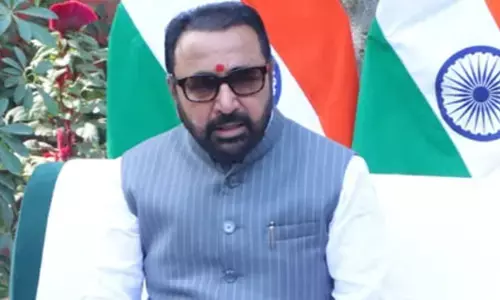Sudden death: The disturbing first symptom of heart disease

Representational Image
The unfortunate demise of Andhra Pradesh Information Technology and Industries Minister Mekapati Goutham Reddy (50) made the headlines on February 21st this year.
The unfortunate demise of Andhra Pradesh Information Technology and Industries Minister Mekapati Goutham Reddy (50) made the headlines on February 21st this year. He was "in cardiac arrest on arrival" as per the hospital press release and could not be brought back to life after 90 minutes of rigorous cardiopulmonary resuscitation (CPR). Mr Reddy was described as a "fitness enthusiast" by multiple media organizations, a health-conscious individual who was very particular about his diet and never missed his gym sessions. This unsettling news was reminiscent of the untimely demise of actors Puneeth Rajkumar (46) and Sidharth Shukla (40), and director Raj Kaushal (49) last year. A few things are glaringly common in all these hapless events. First, all of them reportedly took good care of their physical wellbeing. Second, their very first clinical symptom quickly degenerated to cardiac arrest from which they couldn't be revived. Third, the fact that all of them were 'male' also cannot be ignored. The stories of television anchor Rohit Sardana (41), former under-19 Indian cricket captain Avi Barot (29), senior Tata Motors executive Ashesh Dhar (51), and entrepreneur Ankur Bhatia (48) are conspicuously similar. Then there are incidents about former Indian cricket captain Sourav Ganguly (48) needing angioplasty for a heart attack, and actor Sunil Grover (44) who underwent coronary artery bypass grafting (CABG) surgery for blockages involving all 3 blood vessels of the heart at a young age.
Heart attack at a young age
While there is a lack of universal definition on what should be constituted as 'premature' ischemic heart disease (IHD, heart attack), a commonly cited age cut-off is less than 55 in males and less than 65 in females. Given the genetic makeup of the Indian subset, having a lower age cut-off is reasonable but not scientifically validated. Regardless, all the above case examples can be constituted as premature cardiac deaths. The obvious question that follows is why should an otherwise healthy public figure get a premature heart attack, often leading to death?
Risk factors for premature IHD
Scientific literature highlights various risk factors that contribute to premature IHD. These include male gender, post-menopausal women, diabetes, deranged cholesterol profile, smoking, high blood pressure, obesity, sedentary lifestyle, genetic predisposition, a combination of deranged metabolic parameters often dubbed as 'metabolic syndrome', high mental stress, unhealthy diet which includes high intake of saturated fat, transfat, salt and sugar. Non-traditional risk factors which can be implicated in premature IHD include obstructive sleep apnea (OSA), low-level long-standing inflammation (identified by elevated high sensitivity C-reactive protein), high homocysteine level, vitamin deficiencies, excessive alcohol consumption, autoimmune diseases, complications related to recent infection (like Covid-19) among other factors.
Risk profiling an individual
One of the core principles of preventive cardiology is to risk- profile an individual based on the established risk factors for premature IHD. A comprehensive risk-assessment almost always includes a detailed history and physical examination, tailored investigations to assess the presence and status of known risk markers, and a thorough search for IHD surrogates like peripheral artery disease, stroke etc. Such an individualized approach, often clubbed with known genetic assessment, is the cornerstone of precision medicine. Once an optimal risk profile is curated, a cardiologist can offer a tailored prevention plan geared towards reducing untoward cardiac events which may or may not include the use of pharmaceuticals.
Risk reduction
Healthy diet and physical fitness, while being at the center of any preventive algorithm, cannot be a substitute for comprehensive clinical risk assessment. On the same note, an extremely regimental diet-exercise programme is unlikely to compensate for existing metabolic or genetic risk factors. A risk reduction strategy should include a common-man approach where each risk component is individually analyzed without any prejudice. Human biology is a great leveler and is ignorant of one's social standing. The guiding principles of preventive cardiology are the same for all, regardless of how diet or fitness-conscious an individual may be.
(The writer is Interventional Cardiologist, CARE Hospitals, Banjara Hills, Hyderabad)















